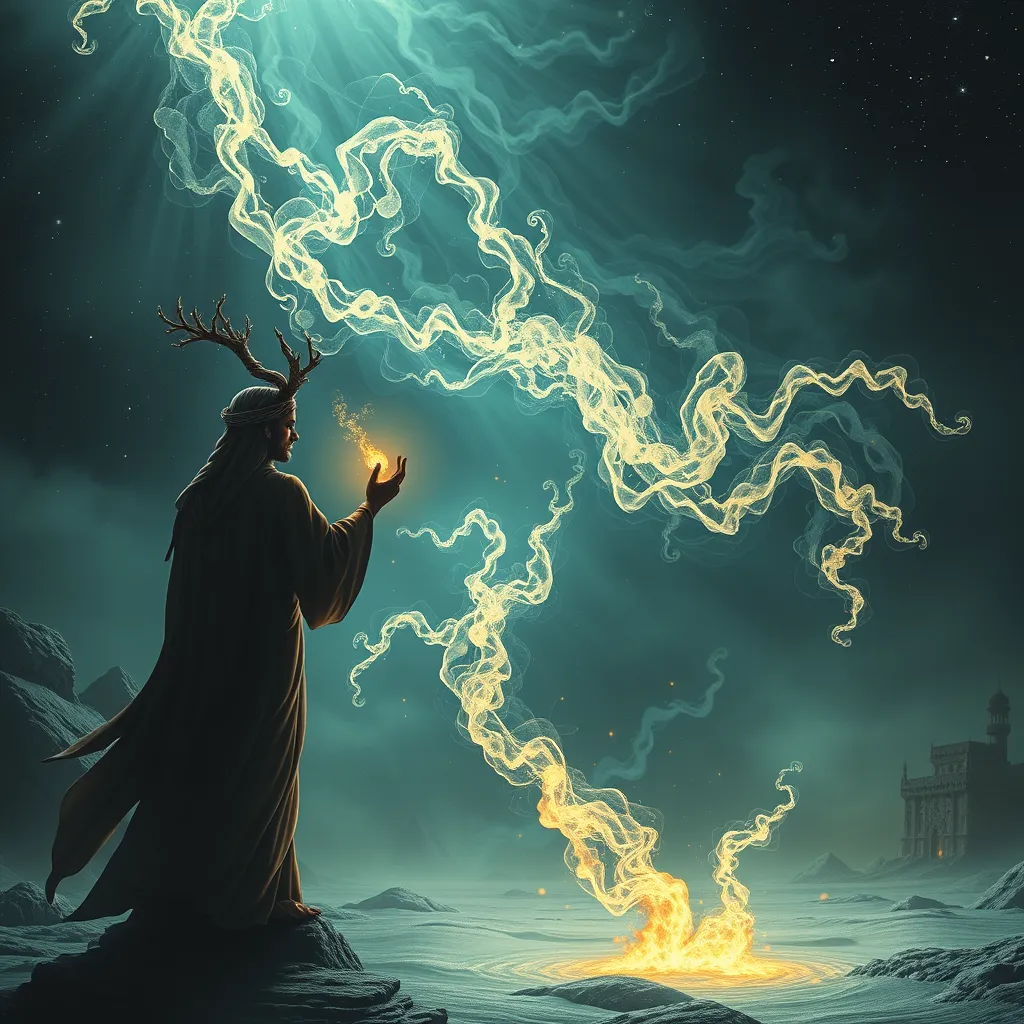The Jinn and the Supernatural: Exploring the Boundaries of Reality
I. Introduction
The concept of Jinn holds a significant place in both cultural and religious contexts, particularly within Islamic tradition. Jinn are supernatural beings created from smokeless fire, as described in various religious texts, including the Quran. They exist in a parallel realm to humans, capable of influencing and interacting with the human world.
The supernatural encompasses phenomena beyond the ordinary laws of nature, often invoking feelings of awe, fear, and curiosity. Different cultures have their interpretations of these phenomena, ranging from spirits and ghosts to mythical creatures. This article aims to explore the intersection of Jinn and the supernatural, delving into their historical origins, characteristics, and their representation in contemporary culture.
II. Historical Origins of Jinn
The historical origins of Jinn can be traced back to ancient myths and folklore, with roots in pre-Islamic Arabian culture. In these early narratives, Jinn were often associated with natural elements, embodying both benevolence and malevolence.
In pre-Islamic Arabian culture, Jinn were believed to inhabit desolate places such as deserts and ruins. They were considered guardians of certain locations, as well as tricksters who could mislead travelers. The evolution of Jinn mythology continued with the advent of Islam, where Jinn were incorporated into religious texts, gaining a more defined role as beings capable of free will, much like humans.
III. The Nature of Jinn: Characteristics and Types
Jinn are classified into several types, each with distinct characteristics. Some of the prominent classifications include:
- Marid: Often depicted as powerful and rebellious, Marids are considered the most formidable among Jinn.
- Ifrit: Typically portrayed as malevolent, Ifrits are associated with fire and are capable of great destruction.
- Qareen: A personal companion or spirit that accompanies each person, Qareens can influence their thoughts and actions.
Physically, Jinn can take on various forms, including animals and humans, but they are primarily metaphysical entities. Their dual nature allows them to be seen as both benevolent protectors and malevolent tricksters. This complexity contributes to the rich tapestry of beliefs surrounding Jinn across different cultures.
IV. Jinn in Religious Texts and Beliefs
The portrayal of Jinn in religious texts is multifaceted. In the Quran, Jinn are mentioned explicitly, illustrating their role as beings created by God, endowed with free will. They are accountable for their actions, similar to humans, which emphasizes the moral dimension of their existence.
Beyond Islamic teachings, Jinn also appear in other religious traditions. For example, in Zoroastrianism, similar entities known as “Daeva” are seen as evil spirits, while in Jewish folklore, references to similar beings can be found in texts discussing demons and spirits. These cross-religious connections highlight the universal fascination with supernatural beings.
Modern interpretations of Jinn continue to vary, with some viewing them as allegorical representations of human fears and societal issues, while others maintain traditional beliefs rooted in religious practices.
V. The Supernatural Realm: Beliefs and Practices
Jinn are often associated with various supernatural phenomena, including hauntings, possession, and unexplained occurrences. Many cultures attribute certain events to the influence of Jinn, reinforcing their presence in the supernatural realm.
Rituals and practices aimed at interacting with or protecting oneself from Jinn are prevalent in many cultures. Common practices include:
- Reciting specific prayers and verses from the Quran.
- Using protective talismans and amulets.
- Performing rituals to summon Jinn for guidance or assistance.
These cultural variations in supernatural beliefs related to Jinn demonstrate the diverse ways in which societies cope with the unknown and the unseen forces that influence their lives.
VI. The Jinn in Popular Culture
The representation of Jinn in popular culture has evolved significantly, influencing literature, film, and television. Stories of Jinn have captivated audiences, often emphasizing their mystical and powerful nature.
Some notable examples include:
- Literature: Classic tales like “One Thousand and One Nights” feature Jinn in captivating narratives that blend fantasy and moral lessons.
- Film: Movies such as “Aladdin” portray Jinn as magical beings that grant wishes, shaping perceptions of their character.
- Television: Series like “Supernatural” explore Jinn within a broader context of various supernatural entities, highlighting their complexity.
These portrayals not only entertain but also reflect the ongoing influence of Jinn mythology on contemporary storytelling and cultural narratives.
VII. Psychological and Sociological Perspectives on Jinn Beliefs
Beliefs in Jinn can have profound implications for mental health and societal issues. In many cultures, attributing unexplained phenomena to Jinn can serve as a way to explain mental illness or social challenges, often leading to specific coping strategies.
Additionally, Jinn can act as metaphors for human fears and challenges, representing the unknown and the uncontrollable aspects of life. This symbolic role can help individuals navigate their experiences and societal pressures.
Cross-cultural comparisons reveal that supernatural belief systems, including those involving Jinn, provide insight into how different societies interpret and cope with existential questions.
VIII. Conclusion
In summary, the exploration of Jinn and their connection to the supernatural reveals rich cultural narratives and complex belief systems. Jinn embody the duality of existence, representing both the benevolent and malevolent forces that influence human life.
As we reflect on the ongoing relevance of Jinn in contemporary society, it becomes clear that these beliefs continue to shape our understanding of reality and the unseen forces that govern our lives. The boundaries between reality and the supernatural remain fluid, inviting further exploration and understanding of the mysteries that lie beyond.




